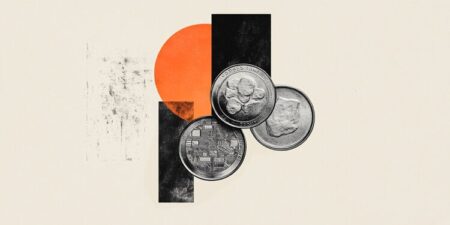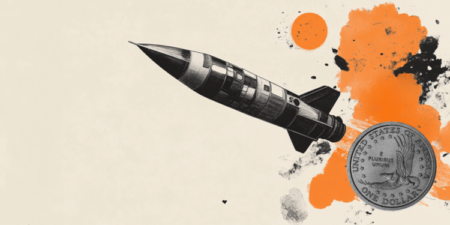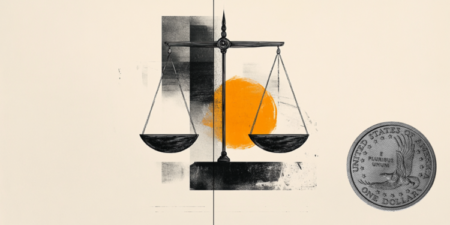- AUD/USD moves near the 0.6300 zone on Thursday, showing mild gains in a choppy session.
- Despite Trump’s auto tariffs, the Greenback weakens as traders await key US inflation data.
- Short-term indicators lean bullish, but longer-term moving averages still cap upward potential.
The Australian Dollar (AUD) trades steady around the region 0.6300 against the US Dollar (USD) during Thursday’s American session. The pair consolidates recent gains despite renewed weakness in the US Dollar, which faces selling pressure after tariff-related developments and market caution ahead of Friday’s PCE inflation release. The AUD/USD pair trades within a tight range, reflecting market indecision but holding ground as optimism over China’s stimulus pledges provides underlying support.
Daily digest market movers: Australian Dollar holds steady as tariff tension weighs on USD
- The Australian Dollar remained resilient on Thursday, trading near key levels amid market consolidation and a softening Greenback.
- The US Dollar Index fell back from multi-week highs, pressured by renewed trade concerns and uncertainty surrounding upcoming economic data.
- Investors await the US core Personal Consumption Expenditures Price Index, expected to shed light on inflation trends and Fed policy outlook.
- Trump’s move to impose 25% tariffs on auto imports adds another layer of uncertainty, with reciprocal actions likely to follow on April 2.
- The Fed maintains a cautious tone. President Kashkari reiterated a wait-and-see approach as policy clarity remains elusive under new trade policies.
- Risk appetite remains fragile, with traders weighing the inflationary risk of tariffs against signs of slower US economic momentum.
- China’s Vice Premier promised aggressive macroeconomic support to stimulate domestic demand and stabilize foreign trade and investment.
- This commitment boosted sentiment for the Aussie, which is closely linked to China’s demand for raw materials and industrial goods.
- The Reserve Bank of Australia continues to lean cautiously dovish, awaiting more clarity on inflation before deciding on further easing.
- Speculators remain bearish on the Aussie, with net short positions hovering near multi-week highs, driven by persistent trade-related concerns.
Technical analysis
During Thursday’s American session, the AUD/USD pair hovered near the 0.6300 region, posting a modest uptick and staying within a tight range. The Relative Strength Index (RSI) climbed to 50, signaling neutral-to-bullish momentum, while the Moving Average Convergence Divergence (MACD) remains in red territory, reflecting lingering selling interest. Although mixed, technical signals tilt slightly in favor of the bulls. The 10-day and 30-day Exponential Moving Averages provide short-term support, both holding above the 0.6300 mark. Conversely, longer-term indicators, such as the 100-day and 200-day SMAs, still suggest bearish conditions. The pair’s current range sits between 0.6278 and 0.6318, with immediate support located at 0.6309 and resistance building near 0.6319 and the 0.6331 zone. A breakout above 0.6400 could spark further gains toward December’s highs.
Australian Dollar FAQs
One of the most significant factors for the Australian Dollar (AUD) is the level of interest rates set by the Reserve Bank of Australia (RBA). Because Australia is a resource-rich country another key driver is the price of its biggest export, Iron Ore. The health of the Chinese economy, its largest trading partner, is a factor, as well as inflation in Australia, its growth rate and Trade Balance. Market sentiment – whether investors are taking on more risky assets (risk-on) or seeking safe-havens (risk-off) – is also a factor, with risk-on positive for AUD.
The Reserve Bank of Australia (RBA) influences the Australian Dollar (AUD) by setting the level of interest rates that Australian banks can lend to each other. This influences the level of interest rates in the economy as a whole. The main goal of the RBA is to maintain a stable inflation rate of 2-3% by adjusting interest rates up or down. Relatively high interest rates compared to other major central banks support the AUD, and the opposite for relatively low. The RBA can also use quantitative easing and tightening to influence credit conditions, with the former AUD-negative and the latter AUD-positive.
China is Australia’s largest trading partner so the health of the Chinese economy is a major influence on the value of the Australian Dollar (AUD). When the Chinese economy is doing well it purchases more raw materials, goods and services from Australia, lifting demand for the AUD, and pushing up its value. The opposite is the case when the Chinese economy is not growing as fast as expected. Positive or negative surprises in Chinese growth data, therefore, often have a direct impact on the Australian Dollar and its pairs.
Iron Ore is Australia’s largest export, accounting for $118 billion a year according to data from 2021, with China as its primary destination. The price of Iron Ore, therefore, can be a driver of the Australian Dollar. Generally, if the price of Iron Ore rises, AUD also goes up, as aggregate demand for the currency increases. The opposite is the case if the price of Iron Ore falls. Higher Iron Ore prices also tend to result in a greater likelihood of a positive Trade Balance for Australia, which is also positive of the AUD.
The Trade Balance, which is the difference between what a country earns from its exports versus what it pays for its imports, is another factor that can influence the value of the Australian Dollar. If Australia produces highly sought after exports, then its currency will gain in value purely from the surplus demand created from foreign buyers seeking to purchase its exports versus what it spends to purchase imports. Therefore, a positive net Trade Balance strengthens the AUD, with the opposite effect if the Trade Balance is negative.
Read the full article here















